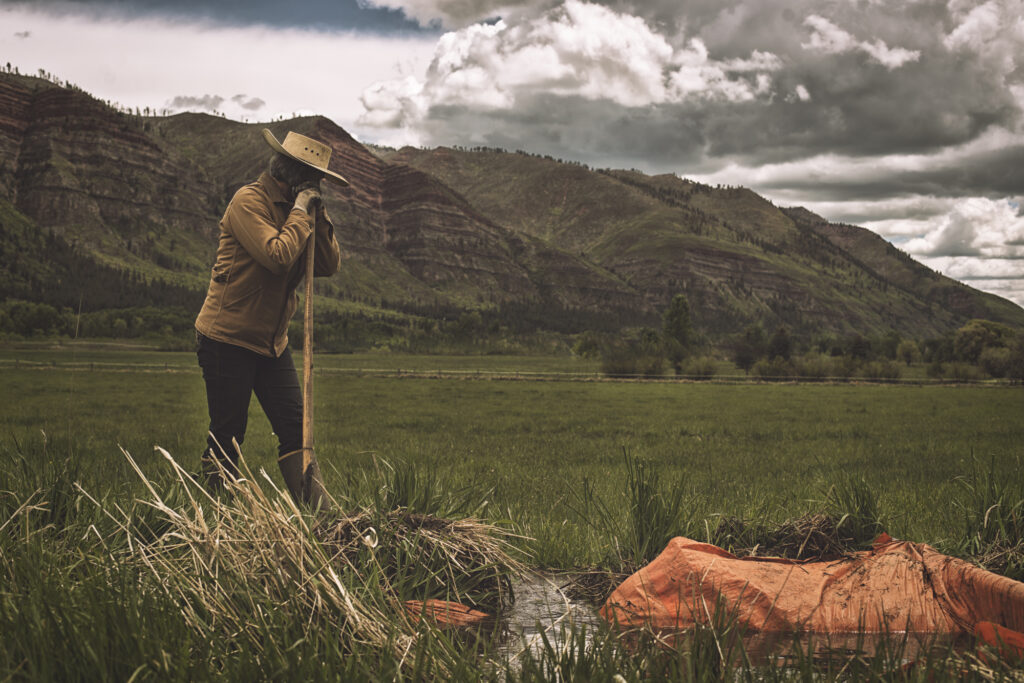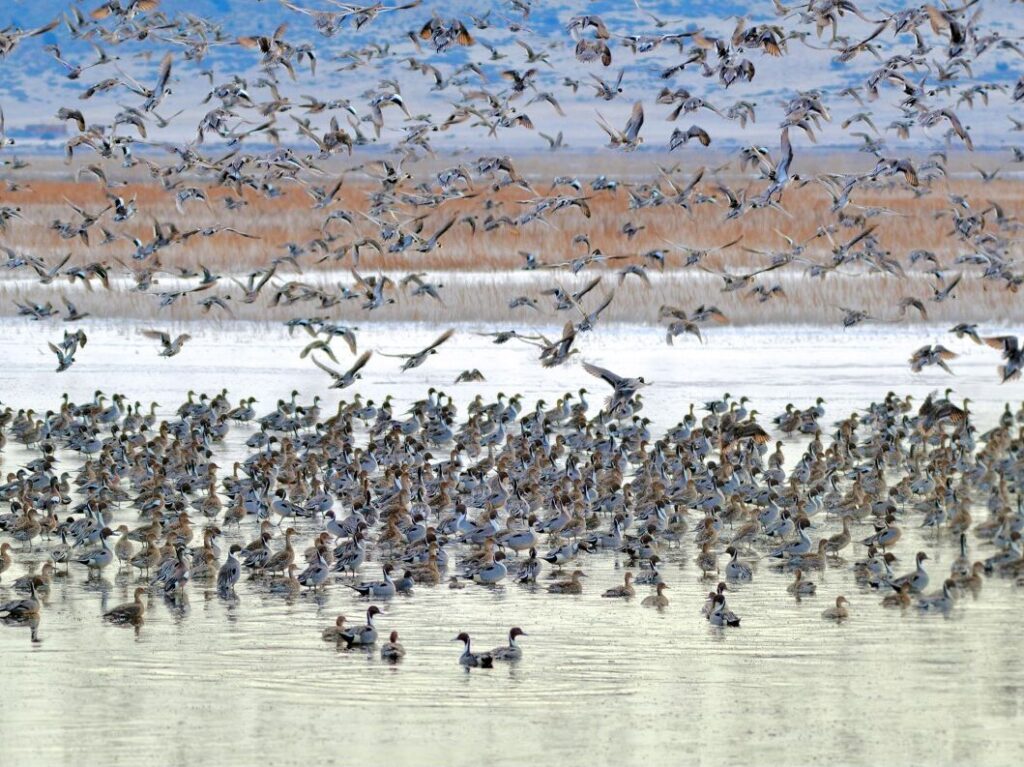Sustaining wetlands through ranching
Flood-irrigating grass hay meadows is a practice that has long enabled ranchers in the snowmelt-driven systems of the western United States to produce forage for livestock and sustain their operations. But as water scarcity increases throughout this semi-arid region, these irrigation systems are threatened—along with the habitat they support.
A 2024 body of science from the Intermountain West Joint Venture, the University of Montana, and other key science partners shows the outsized ecological effects of flood-irrigated grass hay meadows. These small parcels of land only account for 2.5 percent of the region’s irrigated footprint but provide the majority (58 percent) of temporary wetland habitat in the Intermountain West. Located predominantly in riparian floodplains, flood-irrigated grass hay agriculture mimics natural flooding cycles, providing ecosystem services that promote watershed resilience and wildlife benefits. As a result, ranching in many parts of the West has become deeply intertwined with ecosystem function.

explore the app
Working Wetlands Explorer
What is a working wetland? In the Intermountain West, water-driven habitat is scarce for migratory waterbirds and other animals that depend on wetlands. Much of this habitat occurs on private lands and is driven by agricultural irrigation practices. The term “working wetlands” encompasses agricultural land that provides habitat to wetland-dependent species. Flood-irrigated grass hay meadows, as illustrated in this app and associated science, are only wet for a few months of the year, but can provide a significant portion of those wetland benefits. A Google Earth Engine-powered application, the Working Wetlands Explorer, links sustainable ranching practices to riparian ecosystem services.
SUPPORTING SCIENCE & RESOURCES
WWEx User Guide
The user guide is intended for managers looking to dive deeper into the Working Wetlands Explorer tool.
Flood-Irrigated Grass Hay Fact Sheet
A one-page fact sheet explaining the main takeaways from the science and the benefits of flood-irrigated grass hay.
Wetland Evaluation Tool
This spatial wetland analysis product enables users to track changes in surface water over space and time.
Download the Data
Access the data behind the Working Wetlands Explorer. Contact Teagan Hayes for more information.
Read the Insights
The Intermountain Insights provides an overview of the science and its relevance to land managers.
beyond the iwjv
Hydrologic Study Results of the White River Basin, Colorado
A webinar on science that looks at the role flood irrigation plays in sustaining stream flow.
Science Q&A: Flood Irrigation and Groundwater Recharge
Two scientists on their research about irrigation, groundwater, and wetland resiliency in the West.
Artificial water sources help migrating cranes
Reservoirs, stock ponds and flooded meadows provide water in parched landscapes
Mimicking nature: Flood irrigation and watershed health
A panel of ranchers and researchers on how flood irrigation can be used as a management tool.
The Diesel-powered Beavers of the Big Hole
An article explores the similarities between flood irrigation practices and benefits provided by beavers.
Can flood irrigating do what spring floods used to out West?
An article in On Land magazine explores science about flood irrigation practices in mountain systems.
Montana Ground Water Investigation Program
GWIP conducts research on specific hydrogeologic issues in areas that are ranked as the most urgent.



